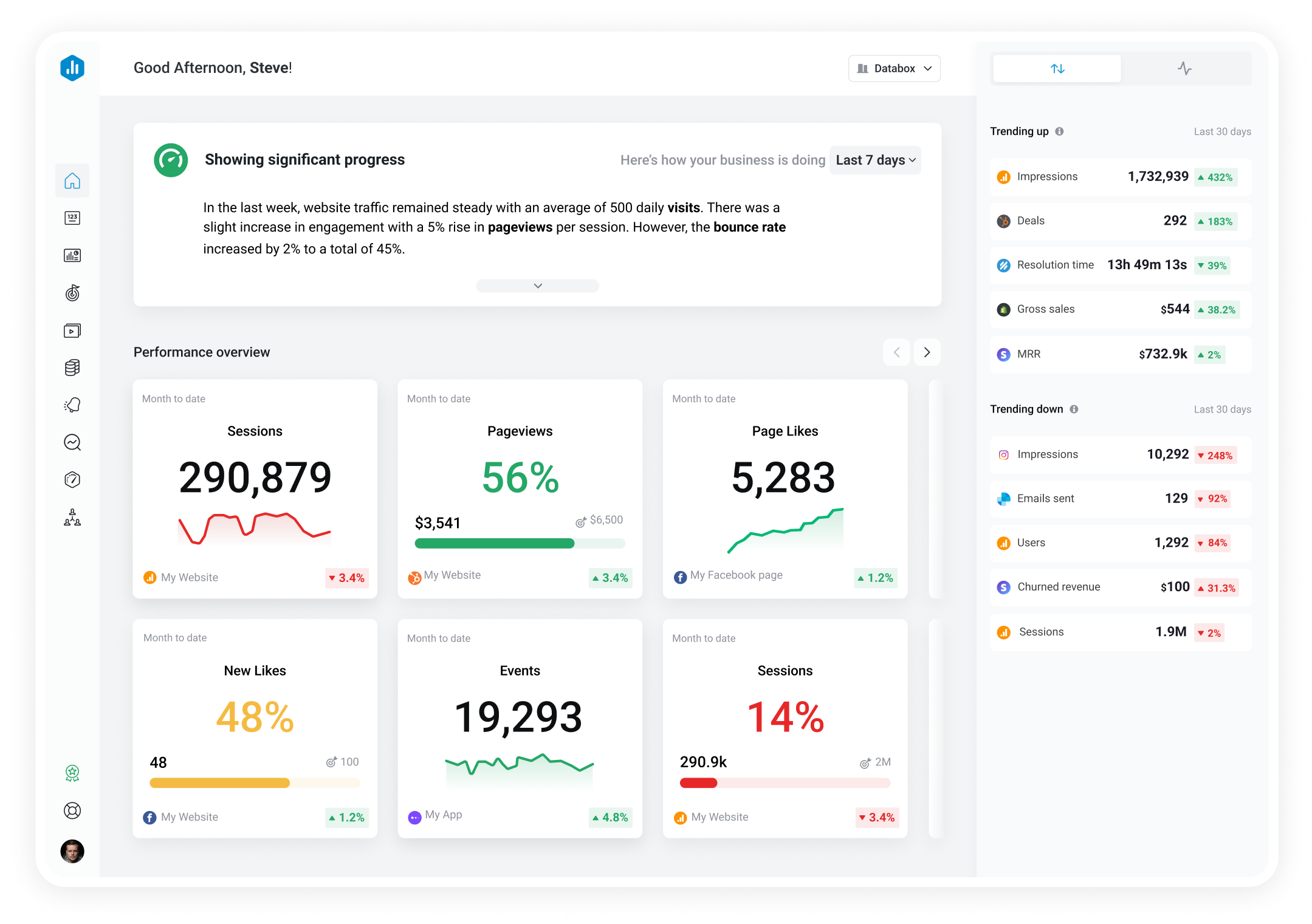Track all of your key business metrics from one screen
GET STARTED

Snowflake seamlessly converts large amounts of data into relevant information for your users and team anytime, anywhere.
Snowflake is a cloud-based data warehouse. It enables data storage, processing, and analytics solutions across multiple platforms. Snowflake combines a new SQL query engine with an innovative architecture designed for the cloud.
With Databox, you can create custom dashboards that users at all levels and with varying roles and expertise can use to make data-driven decisions. Databox allows you to combine metrics from multiple data sources and applications in a single dashboard, allowing you to transform your most important KPIs into meaningful insights that can be delivered to your desktop, mobile, Apple Watch, TV display, or Slack channels.
Show more...
Show more...
Show more...
Databox recommends to group data by day in the SQL query in Metric Builder. If you have several entries for the same date, you need to configure your SQL query to group all values for the given day. You can use Aggregation Functions such as SUM, MIN, MAX, AVG, Count in the SQL query and GROUP BY date DESC to take all values for a day into consideration and compute them based on used Aggregated Function to display all data from your SQL database.
You can learn more about Data Types in Databox here.
Databox has a 10,000-row count limitation for returned results of the Snowflake query. If the result order was not specified in the query, Databox can fetch all the data for 1 Dimension and no data for other Dimensions (since the available 10000 rows would be taken up by the history of the first Dimension).
To resolve this, the result order needs to be specified in the query, like the return order by date descending. Databox recommends adding the following clauses in the Snowflake queries if the result size is hitting the maximum row count limits:
ORDER BY DATE DESC
LIMIT 10000;
Once the return order is specified to display data in descending order on the date, the Dimensions (data results) should no longer be missing in Databox.
The error ‘<class ‘lib.SnowflakeController.InvalidArgumentException’>’ can occur while trying to connect the Snowflake Data Source in Databox if special characters are used in the Snowflake password. Databox advises users not to use special characters in the password as this may cause encoding issues during the connection of the Data Source.
Users need to check if the following characters are included in their Snowflake password and if so, replace them with other characters:
, ‘ ” / \ !? and spaces
More information on this is available in the help article here. This list of special characters is not final and Databox suggests trying to connect the Data Source with a password containing only ‘numbers’ and ‘letters’.
To resolve the error, the value column needs to be cast to double the numeric type. The assumption here is that Snowflake is returning decimal numbers as strings if they are not explicitly cast to a specific numeric type, which is why processing on the Databox end fails for such queries.
According to Snowflake’s documentation, DOUBLE, FLOAT, DOUBLE PRECISION, and REAL columns are displayed as FLOAT, but stored as DOUBLE. This is a known issue in Snowflake. You can read more about this here.
So if the error appears, the query should be updated following the info above (using CAST()), and then data should appear as expected without any errors in Databox.
The error ‘SQL compilation error: Object does not exist, or operation cannot be performed. Unable to connect to the server \”[name].snowflakecomputing.com\”. Check that the server is running and that you have access privileges to the requested database.’ can appear when opening a workbook with an existing Snowflake data connection.
The most frequent reason for the error is that the Snowflake user account does not have the necessary permissions – as a result, queries cannot be executed in Databox.
To resolve the error, ensure that your user account has permission to the server, warehouse, database, schema, and table in the connection.
More info is available here.
